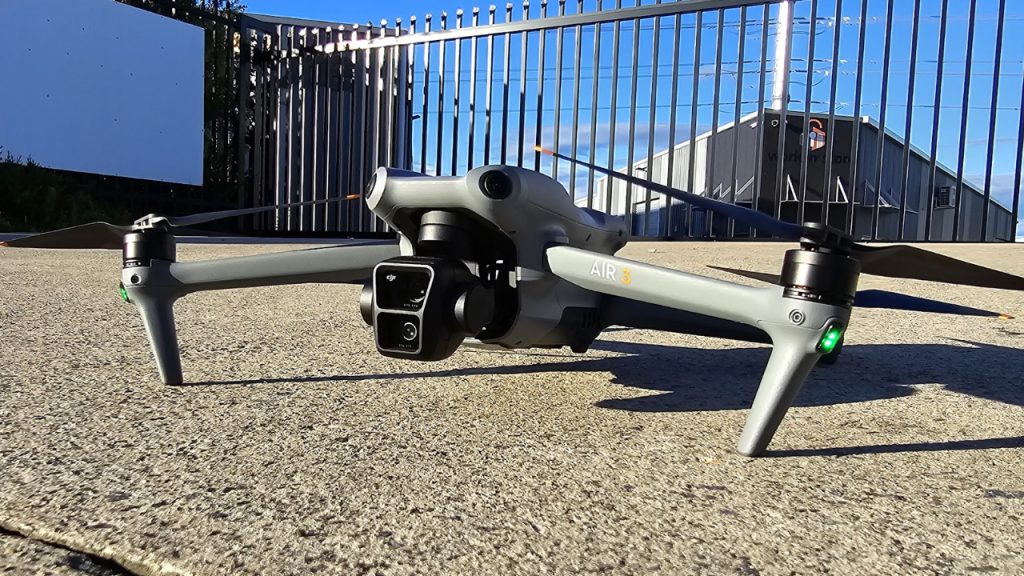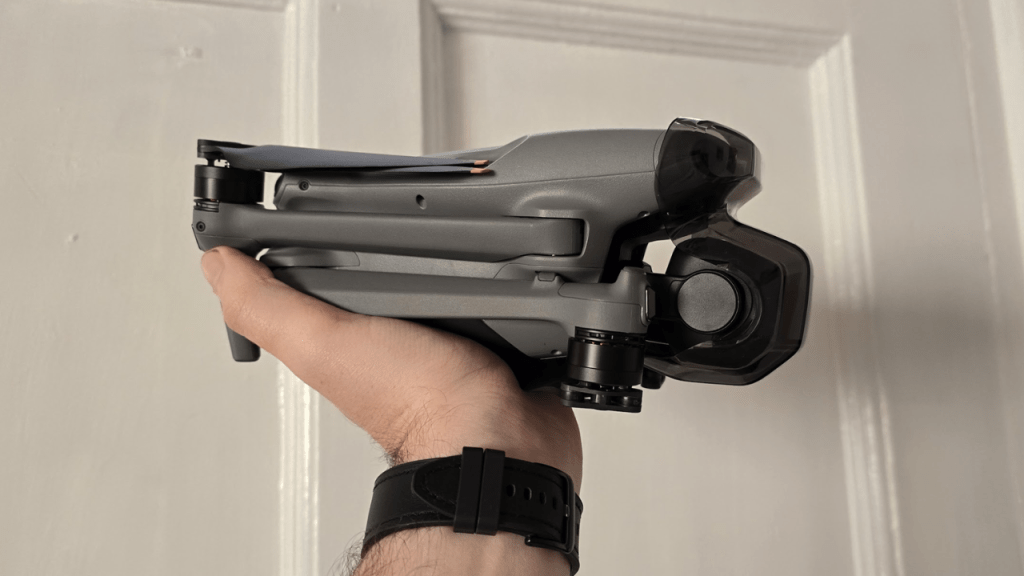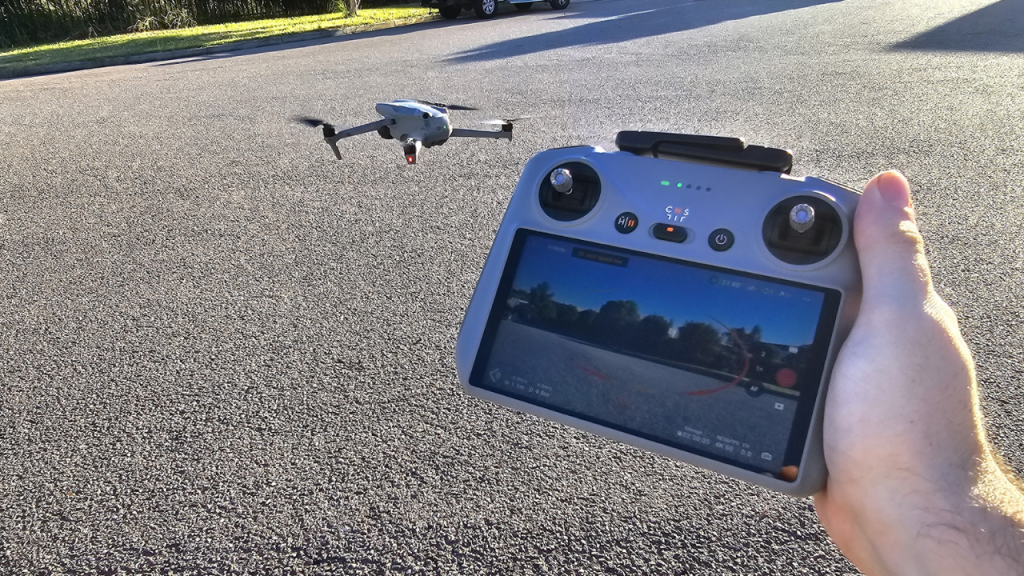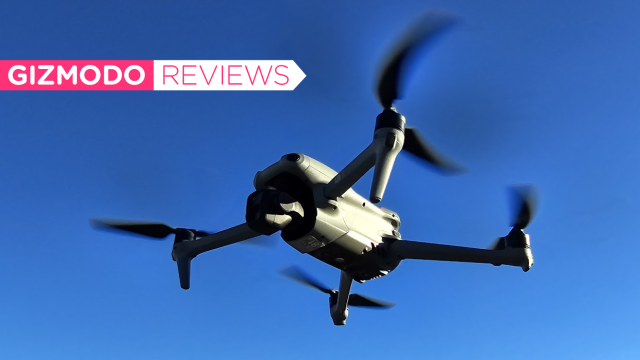I have been a droneless drone guy for years. I have never personally owned a drone, though growing up, my Dad did have a Parrot Drone 2, an exceptionally cheap option that he ended up flying into a TV. Fun! Now I’ve gone hands-on with the DJI Air 3 for a couple of months, and oh no, I have evolved into a drone guy.
The DJI Air 3 represents drone and professional camera maker DJI’s mid-range choice for aspiring drone operators like myself. It is an ideal choice for photographers who don’t want to break the bank, though at just under twice its entry price, DJI sells its flagship option, the Mavic 3 Pro. There’s also the DJI Mini 4 Pro, priced just below the Air 3, and the DJI Mini 3, the entry-level option from DJI.
I haven’t been hands-on with any of the other drones in the DJI family, but the DJI Air 3 is exceptionally fun – if a bit pricier than some people can pay. And that’s ok, these toys are pricey, but if you’re serious about this hobby – be it for making a radio-controlled flyer go fast, or for taking exceptional photos – the Air 3 would be a worthy option.

I’m going to drone on for a minute
Just before we get started, I want to make it clear that the laws on drones in Australia are extremely strict and you need to follow them, no ifs, ands or buts (you can view the drone rules here). Flying over crowded areas or over private property is absolutely not allowed without permission. Also, obviously using drones to stalk people and peep through windows is illegal (and f*cked up). Don’t do this! Every photo and video we shot was done so safely in a monitored environment where I had full vision of the drone and where the privacy of others was not being infringed.
With that out of the way, I’d like to first off say this thing has some incredible cameras. Turn your YouTube viewer up to 4K to get the best picture quality. The cameras can shoot at up to 4K for photos or videos, with the ability to gyrate and change direction, ultimately to look straight forward or straight down, with the user able to contort the camera quite flexibly.
Man do they do a good job of making the colours look perfect. Seriously, I know this is DJI’s mid-range drone, but it’s hard to imagine getting a better experience than this. It was magical.
By far the most impressive feature was the ability to set the drone to autonomously follow a figure, be it a person or even a car (at a moderate speed the drone can keep up with). Just make sure you have constant vision of the drone, otherwise, you’re breaking the rules.
The below video was shot with the Subaru Solterra, the last car Gizmodo Australia has reviewed.
The drone’s ability to strongly keep the car in frame was incredible, along with its ability to sense and detect objects. The controller itself comes with speed toggles for the Drone – a cinema mode (C), a normal mode (N), and a sports mode (S), with the first two modes having obstacle detection and avoidance enabled. The sports mode is wicked fun, by the way, with the drone capable of a max speed of about 75km/h (per DJI) and extremely responsive. Once again, please fly cautiously and not in a way that could damage any property or harm a person.
Getting some Air time
The unit I reviewed was the Fly More (DJI RC-2) combo, and came with DJI’s pro RC-2 controller (which includes an inbuilt screen for a live view), a handy shoulder bag, some spare parts, three dedicated Drone batteries, and a three-slot charging hub for said batteries.
This combo is currently marked down, at the time of review, to $1,899 (was $2,349) – which seems like an awesome deal, considering the base drone is $1,699. You can also buy propeller guards, extra batteries, camera filters, wide-angle cameras, and compatible AR goggles.

The charging hub is quite sophisticated. It’ll prioritise whichever battery has the most charge, so that you can get back up and flying within the least amount of time.
Here’s the drone all folded up.

It takes an estimated hour to get a single battery up to full charge in the dock, or 70 minutes if charged directly to the drone (so you could charge two batteries at once if you wanted; one in the drone, one in the charging hub, both USB-C connected). Each battery offers up to 46 minutes of flight time, which might not seem like a lot, but for a drone is pretty standard.

And, without giving the standard controller a go, I’ve got to say the RC-2 is very well-mannered. With a full charge completed in 150 minutes (though it will take quite a while to run its charge down), the RC-2’s display is gorgeous, and its button layout is not confusing. However, I did find enabling auto-tracking was a bit finicky, as it’s entirely powered through taps on the touch screen, upon objects which can vary greatly in size depending on distance.

As far as distance goes, the first away I was piloting the drone was about 80 metres in the air, at 90 metres from me. Not once did I ever feel like things were sluggish and unresponsive.

In terms of storage, the DJI Air 3 is quite intuitive. There’s a MicroSD card slot on the drone for saving shot video, along with a MicroSD slot on the pro controller (and 32GB inbuilt storage). There’s also inbuilt storage in the drone (32GB), but you’ll quickly find after shooting high-res videos that there’s not enough for any serious use, so you’ll need a storage card.
For transferring footage from the drone, there’s a mobile app you can use, but I’d rather a hardware solution, which thankfully, the Air 3 has. You can use a USB-C cable to transfer from the drone’s SD card and memory to a computer, or you can transfer the videos from your drone to your pro controller’s SD card, though be aware that this takes some time.
The verdict: Should you buy the DJI Air 3?
Look, I’m coming at this purely for the cool factor, and the DJI Air 3 has it. This has turned me into a drone guy, I love this thing. It’s going to enable me to get some incredible photos and it’s going to be tonnes of fun at the park.
If you’re after a fairly competent photography drone, or just want a high-tech toy to play with, you could certainly do worse than the DJI Air 3.
The DJI Air 3 starts at $1,699 for the base kit. The DJI Air 3 Fly More Combo (RC-N2) starts at $2,049, but it doesn’t seem like as good a deal as the DJI Air 3 Fly More Combo (RC-2), which comes with a better controller and costs less.
Buy it from JB Hi-Fi | Harvey Norman | Amazon Australia
Image: Zachariah Kelly/Gizmodo Australia
